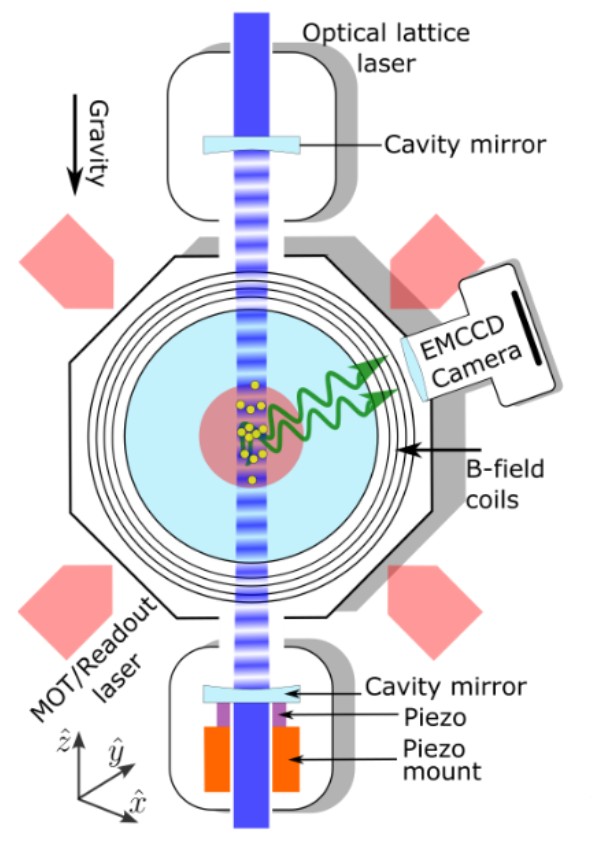Advanced Lattice Atom Interferometer

Atom interferometers are powerful devices for probing new physics and for applied inertial sensing. The main advantage of interferometry with atoms suspended in an optical lattice over the more traditional atomic fountains is readily apparent: it extends the coherence of atomic quantum superposition states from the below the second to the minute scale. This increase in measurement time can provide a major sensitivity sensitivity boost for atom interferometers, particularly when measuring small sources.
Recent experimental results include the observation of interferometer fringes with atoms suspended for more than one minute and the measurement of deviations from the expected Newtonian gravity of a cm-sized tungsten source mass with record accuracy in an atom interferometer. These milestones have demonstrated its potential for probing gravity at short-range and beyond.
Furthermore, our recent progress in understanding the mechanisms that limit the performance of lattice atom interferometers opens up new avenues for improving sensitivity. At Arizona, we are constructing a new apparatus that will use an alkaline-earth atom, such as Strontium, whose rich structure provides new opportunities for enhanced levels of quantum control. Narrow “clock-like” optical transitions provide opportunities for achieving even better control of the motional states of our atoms. We also envision implementing state-of-the-art atomic physics methods to improve the sensitivity and science reach of our experiments. New applications include measuring fundamental constants, searching for deviations from Newtonian gravity, looking for dark matter or dark energy, and much more physics beyond the Standard Model.

Selected Publications
- Coherence limits in lattice atom interferometry at the one-minute scale. Cristian D. Panda, Matthew Tao, James Egelhoff, Miguel Ceja, Victoria Xu, and Holger Müller. Nat. Phys. 20, 1234-1239 (2024) and https://arxiv.org/abs/2210.07289 (2024).
- Measuring gravity by holding atoms. Cristian D. Panda, Matthew J. Tao, Miguel Ceja, Holger Müller. Nature 631, 515–520 (2024) and https://arxiv.org/abs/2310.01344 (2024).
- Probing gravity by holding atoms for 20 seconds. Victoria Xu, Matt Jaffe, Cristian D Panda, Sofus L Kristensen, Logan W Clark, Holger Müller. Science 366 (6466), 745-749 (2019).

